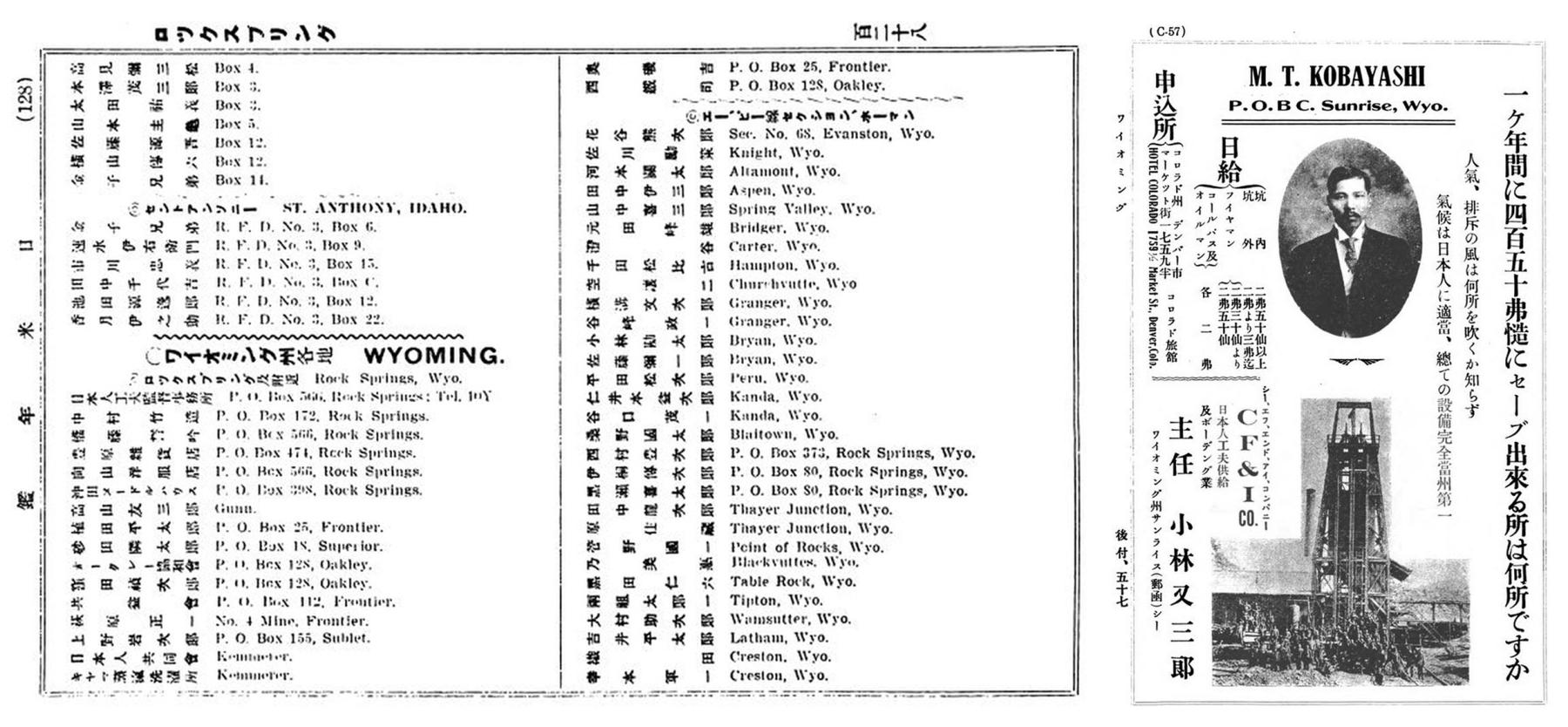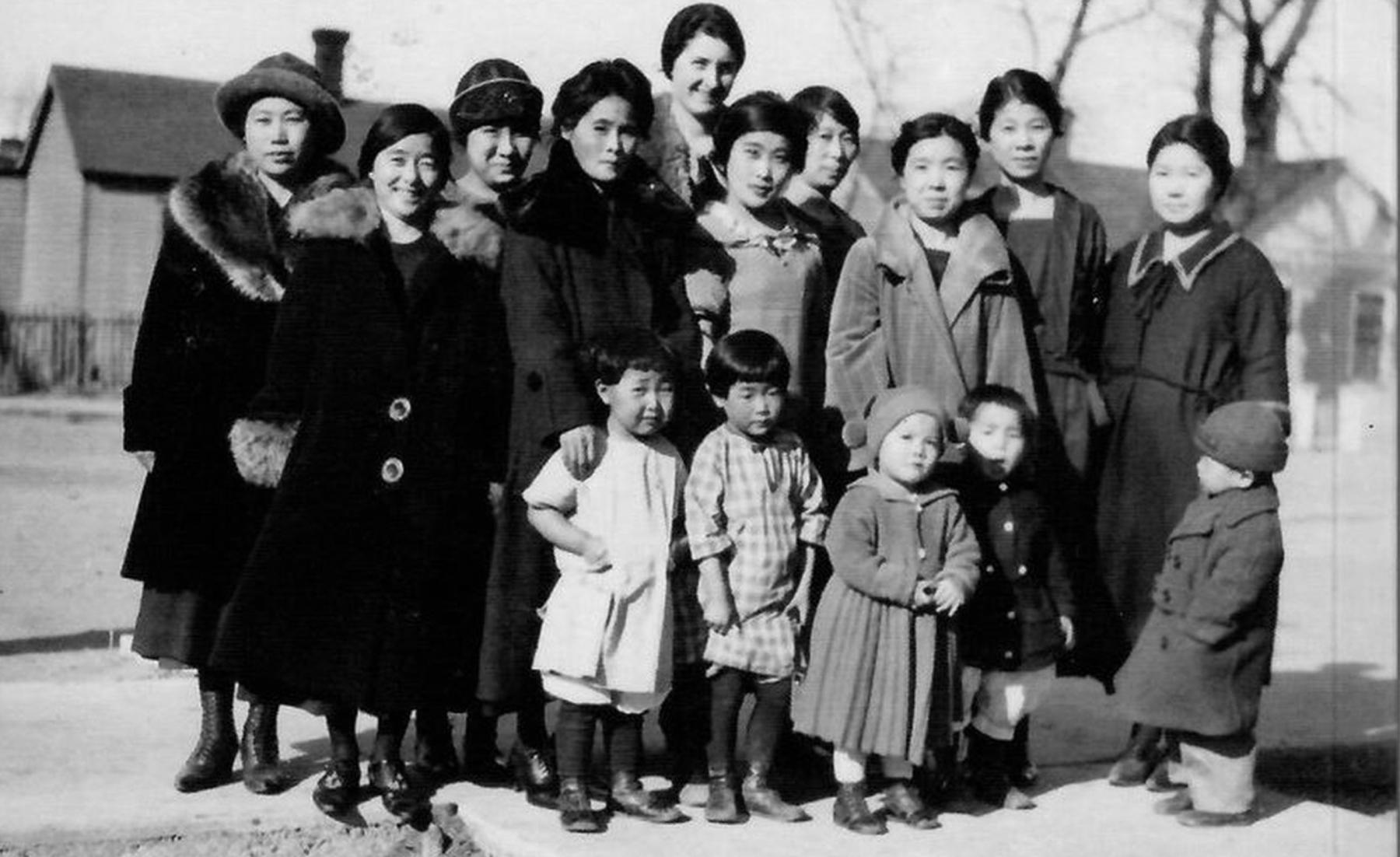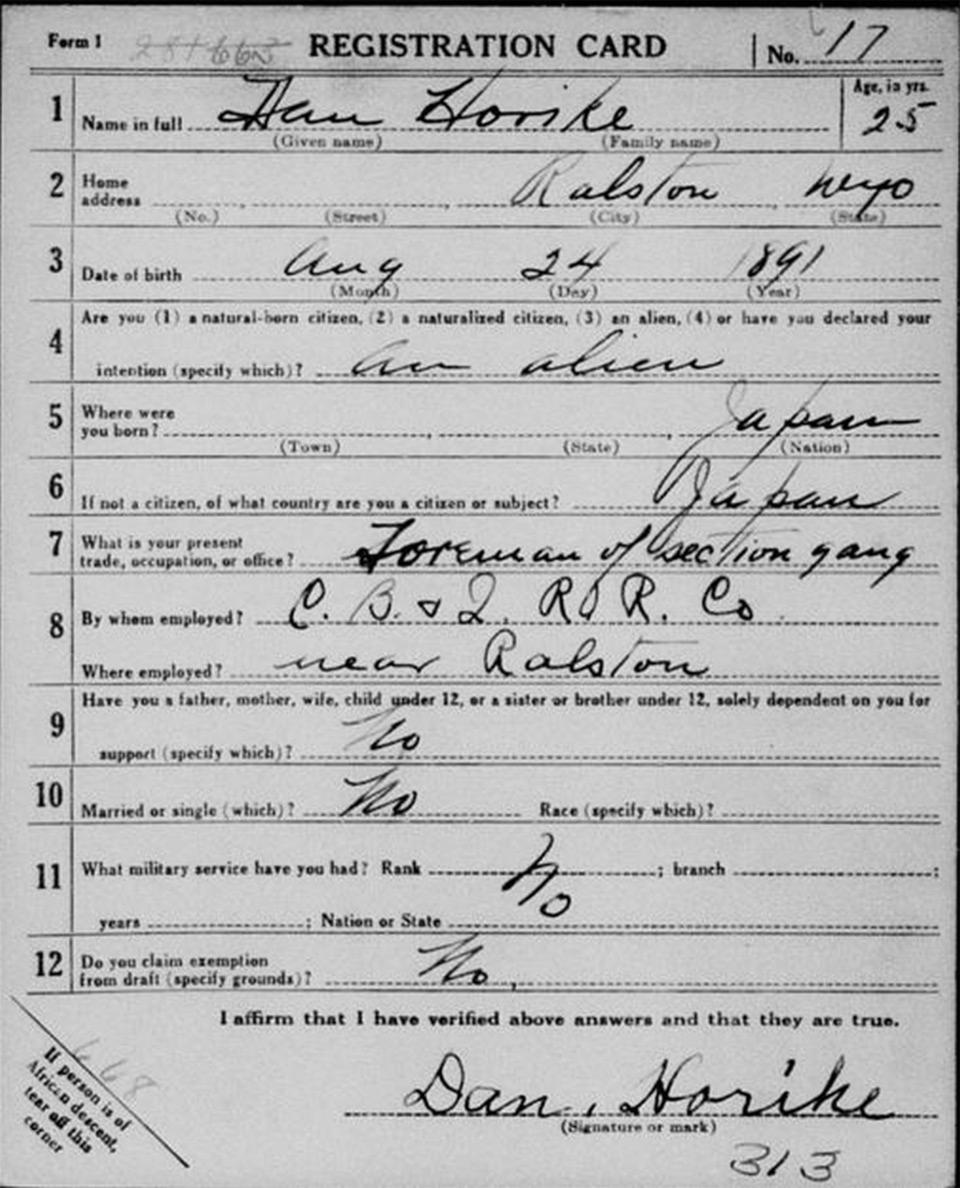- Home
- Encyclopedia
- Before Heart Mountain: Japanese In Early Wyoming
Before Heart Mountain: Japanese in Early Wyoming
The history of Japanese people in Wyoming is most often connected with the Heart Mountain Relocation Center north of Cody, where more than 10,000 Japanese nationals and people of Japanese descent from California and the West Coast were confined behind barbed wire by the U.S. government during World War II.
By contrast, early Japanese immigration in Wyoming was always connected to railroads. Japanese immigrants were in Wyoming at least as early as 1892, when the Oregon Short Line Railroad employed 40 Japanese laborers on its route from Oregon to Granger, Wyoming. The OSL was a Union Pacific subsidiary that ran from Granger in southwest Wyoming to Oregon.
Beginning in 1899 the Union Pacific Railroad, emerging from receivership after the nationwide depression of the 1890s, rebuilt its entire line from Omaha, Nebraska to Ogden, Utah. Workers straightened curves, replaced old bridges, lowered grades and bored new tunnels.
As part of its restructuring, the railroad cut wages—which made any willing workers hard to find. As a result, the UP tapped into a burgeoning new Asian labor market, which satisfied the demand for laborers, and the hirings also boosted shareholder confidence because Japanese immigrant worked for “coolie” wages. Chinese labor, which had built the western half of the transcontinental railroad in the 1860s, was no longer available, as Congress had shut down Chinese immigration with the Chinese Exclusion Act of 1882.
Though some were undocumented, the majority of Japanese came to Wyoming legally, through such ports San Francisco, Tacoma, and Seattle. Union Pacific labor contractors and subcontractors made the arrangements; the immigrants also had to prove they would not be a financial burden to America.
Meanwhile the Chicago, Burlington and Quincy Railroad, better known later as the Burlington, had entered northeast Wyoming in early 1890s and crossed from there into Montana. In 1901, the Burlington brought in a crew of Japanese laborers to help extend its line from Toluca, near Billings, south to Cody. Ironically, therefore, the stretch of railroad on which the Heart Mountain internees arrived four decades later may have been constructed by Japanese immigrant labor.
The Rawlins, Wyoming, Semi-Weekly Republican reported in April 1901 that the Burlington had employed “Japs” for the work, and a “large shipment of the little brown men arrived at Taluca [Toluca] last week and have been distributed among the grading and track laying gangs.”
Some four decades later, the Japanese immigrants who left their families behind in Japan to seek a better life in America and laid the tracks that helped build Cody’s economy, would not be welcomed because of the color of their skin and the shape of their eyes.
But it is by their relations with the Union Pacific, with its main line across southern Wyoming, that we know the most about Japanese immigrants in the state’s early decades. Stories about Japanese people appeared frequently in Wyoming’s newspapers during those years. This article relies largely on those accounts, and on census records. Japanese laborers worked on railroads, in Union Pacific coal mines and as time went on, opened businesses and raised families in the communities along the UP line.
Image
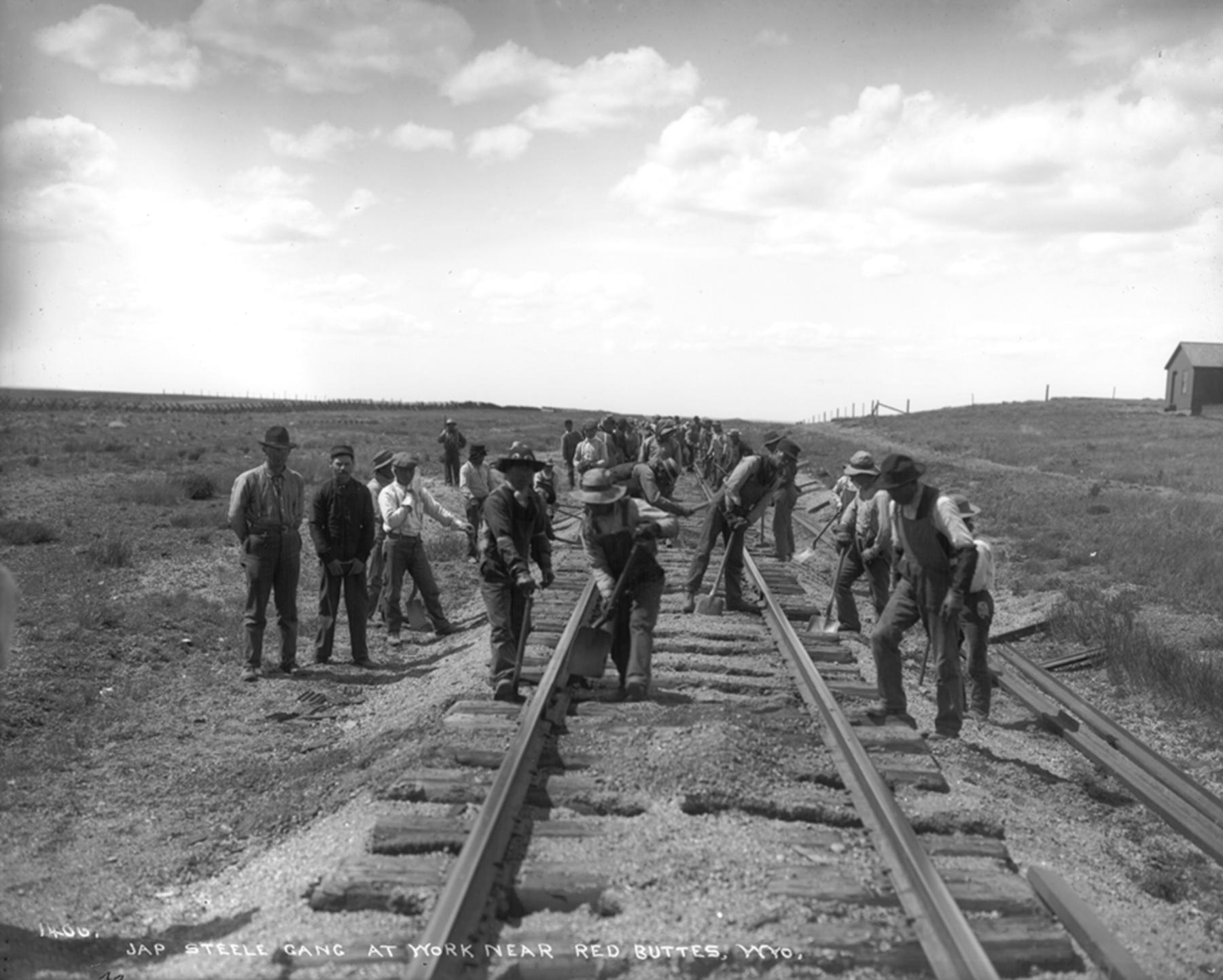
Image
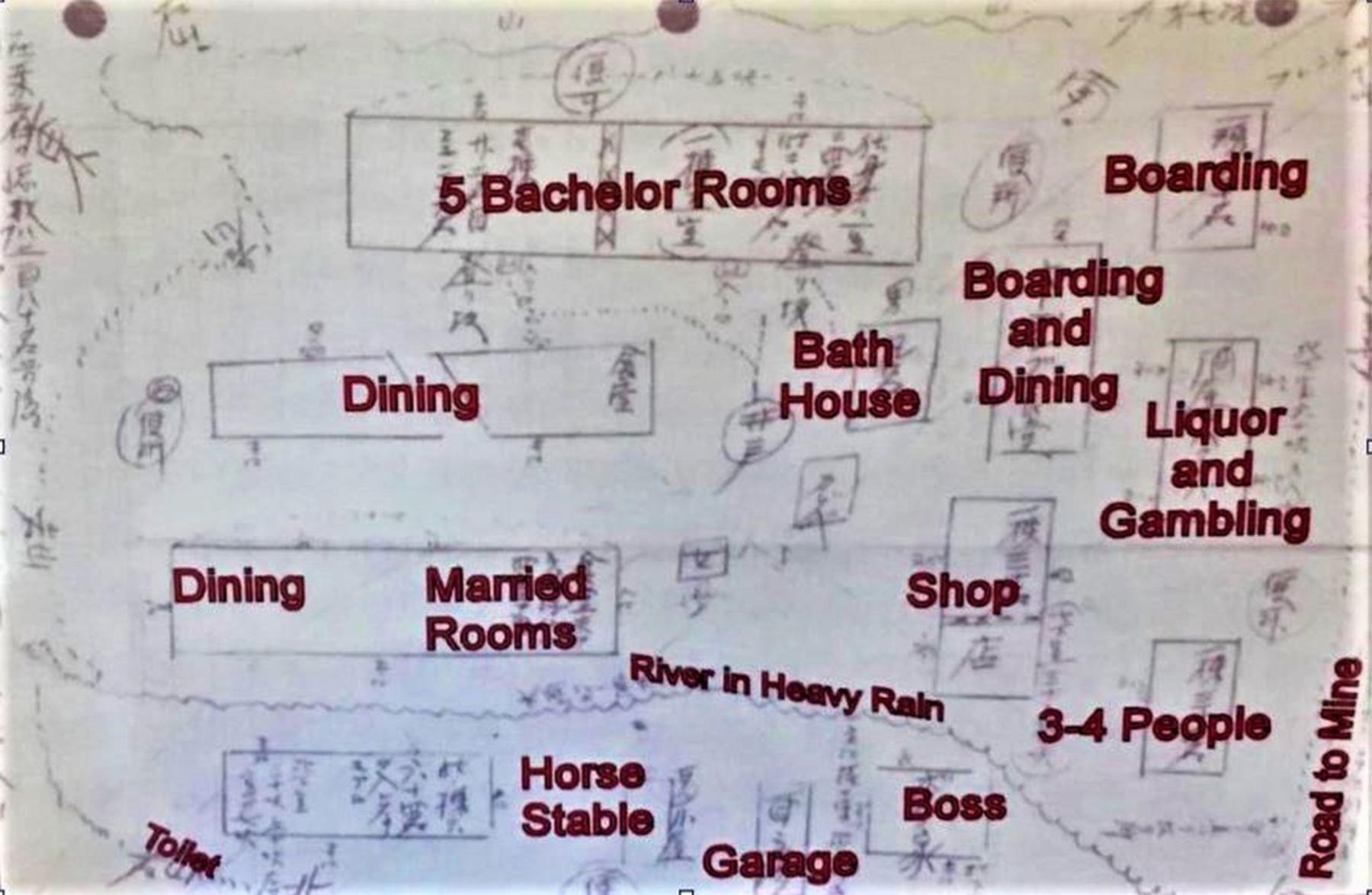
Working for Union Pacific
Skegami Kitichitaro was a section laborer in the Union Pacific’s Cheyenne District. Section gangs maintained 10-mile stretches of track. Kitichitaro worked ten hours a day, six days a week shoveling rock ballast, moving two-hundred-pound railroad ties and other jobs as assigned. He was short and slight in build. On a good day when he didn’t have sore muscles and could stand straight, he was more than a foot and a half taller than the sixteen-pound sledgehammer he used to drive spikes into hard, dry ground And, according to the 1910 census, he was just twelve years old.
Working for the railroad dangerous, too. While the railroads didn’t keep records of workers’ deaths during the construction of the original Transcontinental Railroad, researchers at Stanford University believe that as many as one thousand unskilled workers, mostly Chinese, died during the construction in the 1860s of the Central Pacific from California to Utah. In addition, a report by the Census Office in 1908 and 1909 noted accidents caused 52.5 percent of the deaths of untrained railway employees. A study by two sizeable industrial life insurance companies said deaths from accidents in the case of railway track and yard workers were so numerous they outnumbered deaths from all other causes in other industries.
| Census Year | Wyoming Population | Japanese in Wyoming |
| 1900 | 92,531 | 393 |
| 1910 | 145,965 | 1,595 |
| 1920 | 194,402 | 1,194 |
| 1930 | 225,565 | 1,019 |
| 1940 | 250,742 | 643 |
From U.S. Census records.
Anti-Japanese Sentiment in Wyoming
Japanese laborers on Union Pacific in Wyoming generally came seeking prosperity like immigrants arriving from Europe in large numbers in the same years. But they faced different kinds of resistance—and a rhetoric that bred violence.
Labor unions, threatened by what they saw as foreign workers willing to work at the same coolie wages as the Chinese had been, wanted to see the Chinese Exclusion Act to include the Japanese. As a result, newspapers revived Yellow Journalism propaganda once used against the Chinese. The United States adopted stricter policies aimed at curbing Japanese immigration. This sometimes led to violence.
In 1900, the citizens of Evanston threatened Japanese newcomers by placing a can of gunpowder under the railroad car they were living in. The Rawlins Republican noted “for many years Rawlins has placed a ban on the yellow race, and both Mongolians and Japanese have found it impossible to live in town owing to the abuse heaped upon them, not as a body of people but as individuals.”
In 1908, the young boys of Laramie waged a four-day riot against the Japanese, threatening to hang immigrants from trees, vandalizing a Japanese boarding house and roping and dragging a Japanese man through the street.
Characteristics of the Japanese Worker
But though newspapers often described the Japanese immigrant as a failure light in physique and staying qualities, and as lacking in moral steadiness as he was in physical force, veteran roadmasters and railroad supervisors thought otherwise.
In 1912, F.W. Green, a roadmaster on the Canadian Pacific Railroad, reported:
They [the Japanese] are quick to learn the work and are intelligent, [and] can be used in any kind of track work from putting in switches down to cleaning up or fencing the right of way. They [the Japanese] will do any work as cheaply as it can be done by other nationalities. Although it is an unwritten law in this locality not to promote an Asian to foreman . . . I believe there are a few Japs on the coast who would make good foremen over gangs of their nationality.
The same year, J.A. Ottman, an assistant superintendent for Union Pacific in Cheyenne, also praised Japanese laborers, saying they were “far superior to any other foreign nationality and producing more satisfactory results.” Ottman added the Japanese were apt, conscientious and showed a desire to master details.
As early as 1902, shortly after their introduction to Wyoming, the Union Pacific promoted Japanese men to track foremen. This was partly out of necessity because of the diminishing supply of workers. Eventually, however, 96 of the 126 section supervisors in the Wyoming Division of the Union Pacific were Japanese.
Chikahisa Ota was one of those foremen. Born in in Okayama, Japan, in 1887, he emigrated to the United States in 1907. He worked for Union Pacific in Cheyenne before his promotion to section foreman on the Wamsutter line in Sweetwater County. Ota supervised a crew of mixed nationalities with some success. Sometimes, however, there was interracial tension between the Japanese section laborers and tracklayers of other nationalities—dust ups with Italians and Greeks in Albany and Sweetwater counties among them.
Ota worked as a section foreman until his discharge in 1942 after the Japanese bombed Pearl Harbor.
Contributing to their success was the fact that Japanese foremen translated Union Pacific work manuals into Japanese,so all Japanese laborers knew how to perform their job. Of those Japanese enumerated in Cheyenne during the 1910 Census, sixty percent indicated they had some command of English. Those who didn’t speak English learned on the job through fellow countrymen who taught them three words a day.
Image
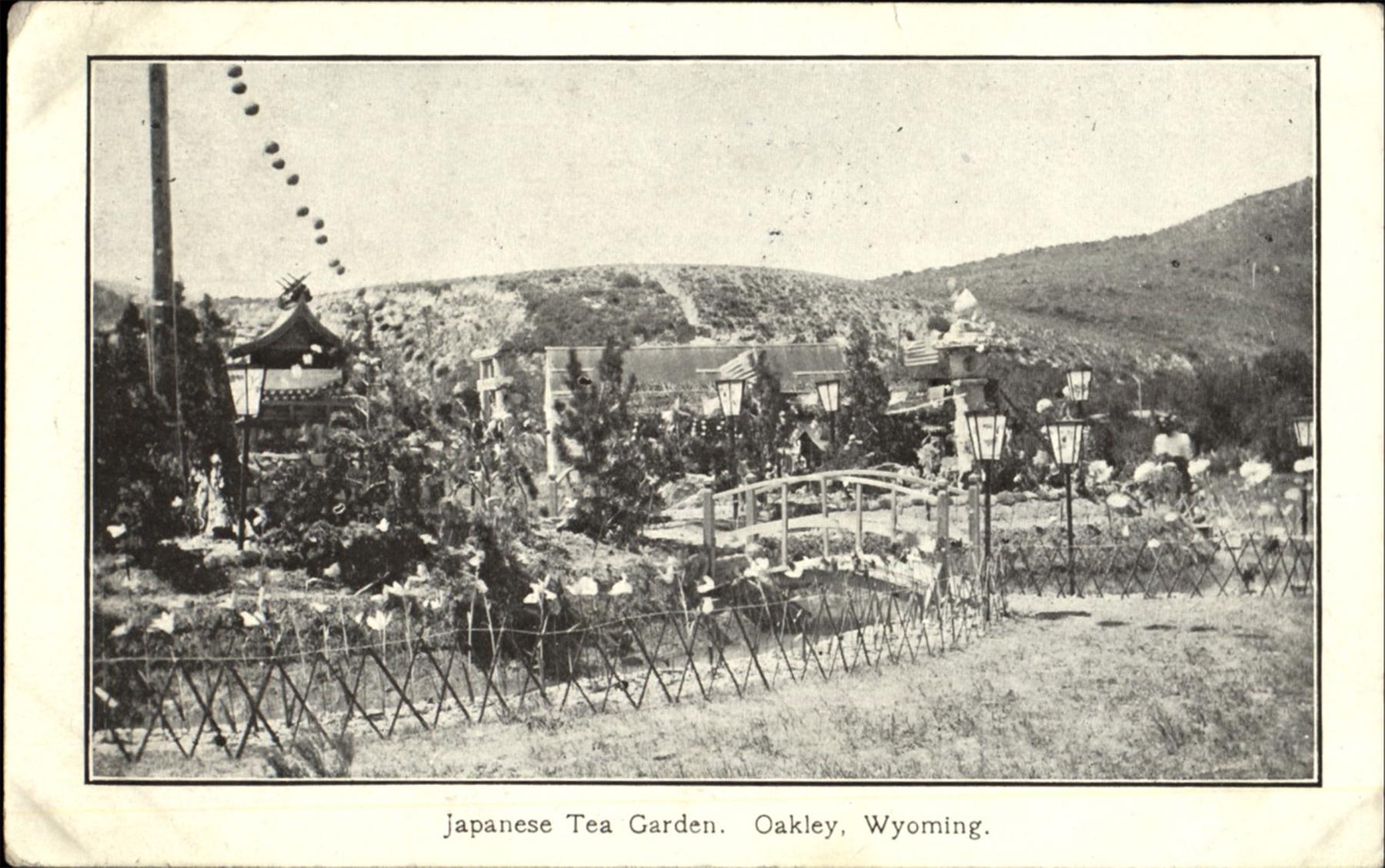
Labor contracts and contractors
The Union Pacific hired Japanese immigrants with the help of labor contractors. The business was profitable for everyone involved.
Contractors recruited Japanese immigrants with a promise of high wages, arranged transportation from the homeland and provided housing for the immigrants. Once the immigrants arrived, however, their dreams of prosperity evaporated because of “extenuating circumstances.” But the Japanese immigrant had little recourse other than to accept low wage jobs. Japanese immigrants earned $1.25 a day for the same work as European immigrants who earned $1.65 a day. Labor contractors also deducted a daily ten percent commission to cover laborers’ expenses such as food, shelter, clothing, and supplies.
Tadashichi Tanaka was an early contractor who provided Japanese immigrant labor to the Oregon Short Line. Tanaka subcontracted from a Chinese subcontractor, who subcontracted from W.H. Remington, a white American, who contracted for the OSL. Tanaka later cut out the Chinese middleman and worked directly for Remington out of an office in Nampa, Idaho. By September 1892, he had five hundred workers employed on the Oregon Short Line, including the forty Japanese laborers on the route between Oregon and the Granger terminal.
Tanaka, unfortunately, also took advantage of his fellow countrymen’s situation by embezzling money and living riotously in Utah before he was forced to relinquish his contracting license.
More reputable contractors who supplied labor for Union Pacific were Martin O’Malley and the Wakimoto-Nishimura labor agency owned by George Wakimoto and Ryuun Nishimura. Shinzaburo Ban was also a Japanese labor agent who operated primarily in northwestern Wyoming around Sheridan, as well as in Idaho, Oregon and Washington State.
Japan Towns in Wyoming
The Japanese immigrants lived in the principal towns along the UP line-- Cheyenne, Laramie, Rawlins, Rock Springs, and Evanston—as well as smaller coal mining communities and some since forgotten places.
Railroad section crews lived in boxcars along the tracks; Japanese coal miners lived in “Jap camps” generally on the outskirts of a community. The section crews worked year around in all weather conditions to keep the UP moving.
Teinosuke Endow, a track worker near the Wyoming-Nebraska line, described the austere life of section workers. He and his crew mates—nine other men—lived in a single freight car on a sidetrack on the prairie. The men slept on the floor on wheat straw and wrapped themselves in blankets as tight as sushi rolls. In the morning they swept out their home to eliminate the bedbug armies that had assaulted them during the night.
Once a week, a passing train brought them food and fresh drinking water. One passing train dropped wheat flour and bacon, which the men ate daily until the next train dropped off more supplies. Many of the men, if not all, suffered from night blindness because of their unbalanced diet.
The Japanese in coal mining communities fared a little better. They generally were crowded into fixed structures. Rock Springs still has some of those wooden barracks. Cemeteries in Rock Springs and Hanna have some Japanese headstones.
Laramie has a couple of Japanese immigrants buried in the local cemetery, and famed Wyoming photographer Joseph E. Stimson captured a “Jap Steel Gang” at work in nearby Red Buttes.
Cheyenne, too, has evidence of a Japanese community. When Union Pacific first hired Japanese immigrants at the turn of the century, census records showed communities were made up of single males. Married men left families behind in Japan until they saved enough money send for their kin. But by the 1910 census, many Japanese were laying down lasting roots in the capital city. Families had little privacy, however; the census reported as many as fifteen individuals occupying a two-bedroom bungalow in Cheyenne. But their children attended public schools. There are photos of Japanese children in elementary and high school yearbooks and class photos.
Wyoming State Archives has among its collections a diary by Mary Julia Moore Allyn, founder of the First Baptist Church’s Americanization of the Japanese program. Although the Japanese by then couldn’t legally become American citizens, the program taught English as a second language and valuable life skills such as how to cook American-style meals. One eager Japanese woman who attended the classes, after she learned to make a lemon pie, served her family the tasty tart on three consecutive days!
Photos show church members posing with Japanese women and children in front of section housing located south of the UP roundhouse. One of the teachers in the photo is Zennia Emerson, the wife of Governor Frank Emerson. She sometimes hosted Japanese families in the Governor’s Mansion.
The community south of the roundhouse, unfortunately, ceased to exist after the Union Pacific expanded its railyard further south. And around that time, the early 1930s, an entry in the Allyn Diary said many of the Japanese families started to return to Japan to educate their children.
Cheyenne’s other Japan Town was north of the round house and near the depot. The Wakimoto-Nishimura labor agency conducted its business here. The agency built a combination Japanese boarding house and hospital on Fifteenth Street, but it, as well as other Japanese boarding houses, are now vacant lots or parking lots.
Today, only one former Japanese boarding house remains of Japan Town north. The only significant concentration of Japanese is found at Cheyenne’s Lakeview Cemetery.
In the southeastern corner is the Japanese Plot, an extension of Potter’s Field. Here, nearly 100 people of Japanese descent are buried. The plot was founded in 1924, the same year Congress passed the Immigration Act of 1924, which shut down Asian immigration including, for the first time, Japanese immigration, entirely. Approximately one-third of the burials have a memorial. The remaining burials are in Potter’s Field.
Not all the people buried in the Japanese Plot at Lakeview Cemetery are Japanese. Sadie Nokagawa, for example, was a white woman who was murdered by her Japanese husband. Nokagawa is unique because it was once illegal for a Japanese (or Chinese) to marry a white woman. This was Wyoming law since Wyoming became a territory until the Chinese Exclusion Act, in 1882. The law was reintroduced in 1913 and aimed specifically at the Japanese.
Image
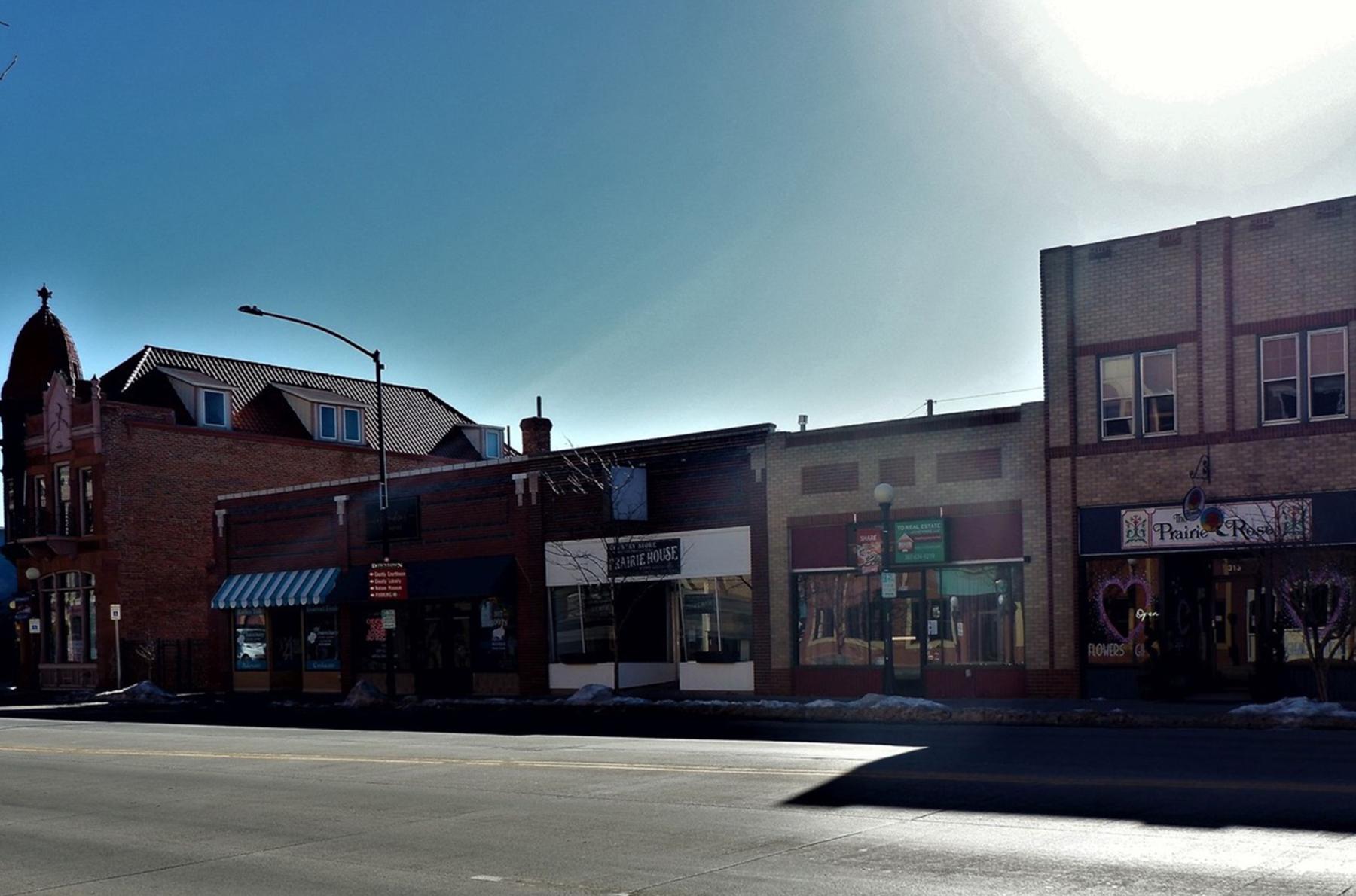
Japanese Assimilation and Loyalty
Japanese immigrants were never truly assimilated into Wyoming in the early 20th century because of the prevailing political climate. Many communities, however, did to some extent, accept the Japanese. The Japanese routinely sponsored local firework displays in such communities as Oakley and Diamondville near Kemmerer, and in Rock Springs. The Japanese also showed their loyalty supporting Red Cross subscriptions and War Bonds during World War I. In 1918, Japanese residents raised $5,300 for Oakley’s third Liberty Loan drive, the equivalent of more than $104,000 in 2022 dollars.
Many Japanese also volunteered for the draft during World War I, believing it was a pathway to citizenship. The U.S. Army inducted few Japanese volunteers, however, because existing treaties gave them an exemption to the draft. And the same tired rhetoric obstructed their chances—the Japanese were unassimilable, and they did not fit the description of a “free white person.”
Tom R. Yamamoto, a cook at a ranch in Cokeville, was just one of the five hundred Japanese in the nation granted citizenship for military service. He trained at Fort Riley, Kansas, but he did not serve overseas. He received his citizenship on March 7, 1921, at a ceremony in Kemmerer. Other Japanese would have to wait until 1952 before they could apply for citizenship.
Another Japanese who volunteered for the draft during World War I was Dan Horike. He was 25, and a section gang foreman for the C.B.& Q. Railway at Ralston, near the Heart Mountain train stop between Cody and Powell.
One has to wonder whether he, too, worked on the rail lines that led to Heart Mountain?
World War II
When the Japanese bombed Pearl Harbor in December 1941 and World War II began, hundreds of Japanese still worked for the Union Pacific in coal mines and on the tracks.
In February 1942, the UP dismissed 75 Japanese employees who had been replacing a main switch at Howell, north of Laramie, under the suspicion of sabotage, which was never proven. Later that month, Union Pacific President William Jeffers wrote, “Make no mistake about it, I am unalterably opposed to the employment of all Japanese on these railroads, whether they are Japanese Nationals . . . or whether they are Japanese born in this country.”
Kikuji Kumagai was one of the Japanese fired by the Union Pacific. Kikuji worked for the UP as a section foreman at Ridge, a railroad stop six miles east of Medicine Bow. The company gave Kumagai and his family 48 hours to leave section housing, and the Carbon County sheriff confiscated his rifle and Kodak camera. A neighbor helped the family find a place to live in Medicine Bow, and the Kumagai children attended school there. Other sympathetic families gave Kikuji odd jobs. But he couldn’t enough to support a family of six, and later moved to Salt Lake City to be closer to other family members.
Not all Japanese who worked for the Union Pacific were fired, however. The company retained Japanese coal miners since they were essential to America’s war efforts. Tom Kowaguchi, who had worked as a coal miner since 1905, died on November 15, 1945, after spending the war years harvesting the coal that fueled the troop trains.
Image
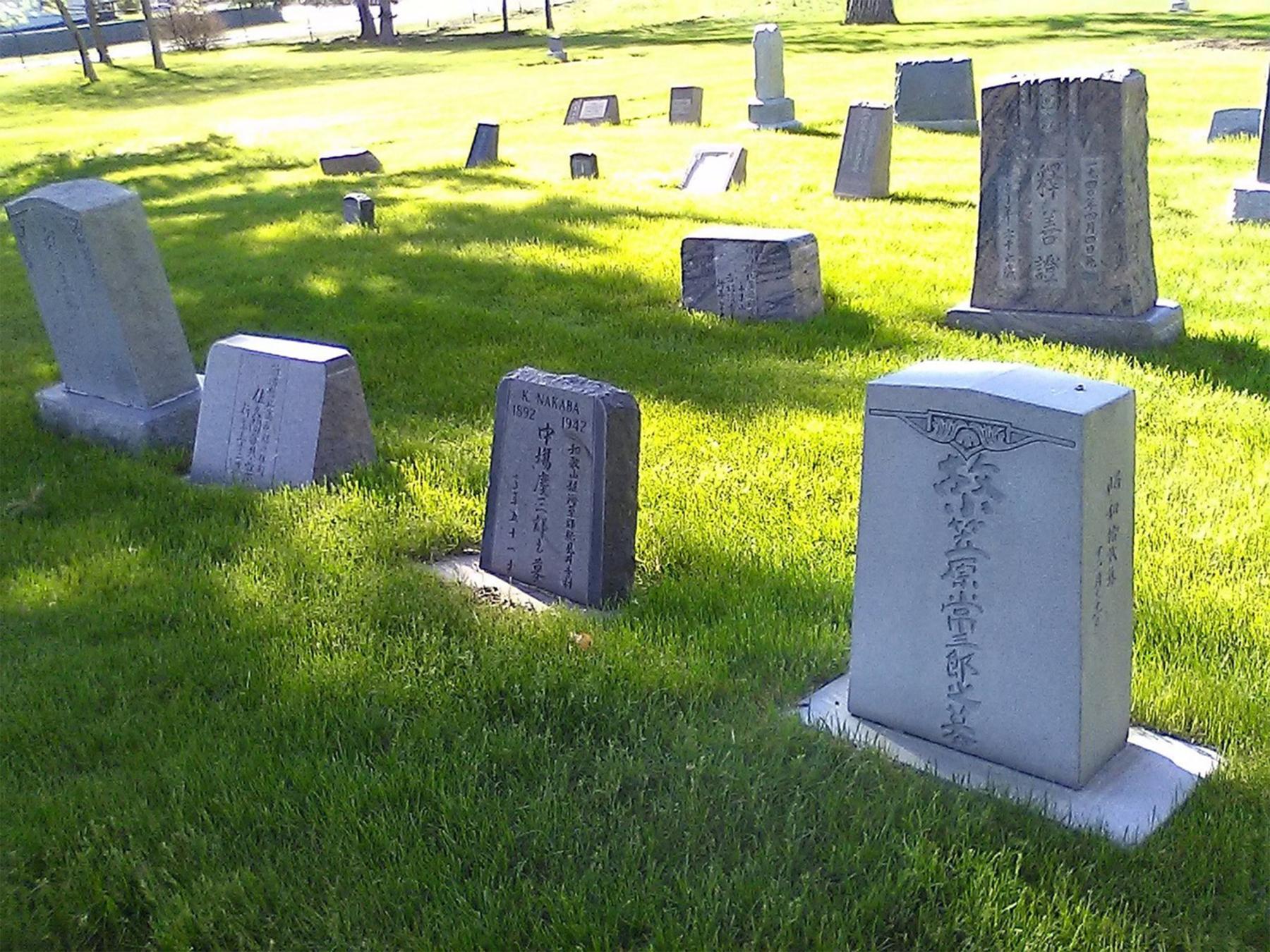
and $9.90 in cash. Author photo
[Editors' note: Special thanks to the Wyoming Cultural Trust Fund, support from which in part made publication of this article possible.]
Primary sources
- Newspaper sources accessed Feb. 24. 2024 via Wyoming Digital Newspapers Collection.
- “All Aboard.” Cody Enterprise, October 31, 1901.
- “Americans and Japs Clash.” Laramie Boomerang, March 16, 1908.
- Green, F. “Advantages in the Use of Japanese Track Labor.” Railway Age Gazette, 1912, p. 950.
- Lauck, W. Jeet. “Occupation Hazard of Unskilled Employees on the Railroads.” Presentation to the United States Railway Labor Board, 1921.
- Ottman, J. “Possibilities of the Japanese as Track Foremen.” Railway Age Gazette, 1912, p. 950.
- “Railroad Rumblings.” Rawlins Semi-Weekly Republican. April 6, 1901.
- “The Yellow Men Depart.” Rawlins Republican, Feb. 5, 1902.
Secondary Sources
- Kano, Hiram Hisonori. A History of Japanese in Nebraska. Crawford, Nebraska: Cottonwood Press, 1984.
- Klein, Maury. Union Pacific: The Rebirth, 1894-1969. New York: Doubleday, 1989, p. 413.
- Lyon, Daniel J. Japanese in Wyoming: Union Pacific's Forgotten Labor Force. History Press. Charleston, S.C.: History Press, 2023.
Illustrations
- The photos of the work gang, the First Baptist Church members and the Japanese families are from the Wyoming State Archives. Used with permission and thanks.
- The Japanese map of the coal camp is from collections of the Rock Springs Historical Museum. Used with permission and thanks.
- The postcard of the tea garden in Oakley, Wyoming, is from CardCow.com.
- The images from the Japanese yearbooks are from the author’s collection. The photos of 16th Street in Cheyenne and of the Japanese in Lakeview Cemetery are by the author. Used with permission and thanks.
- The image of Dan Horike’s World War I draft registration card is from familysearch.com.

